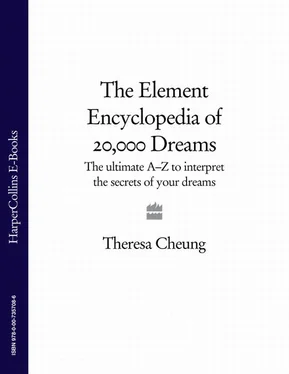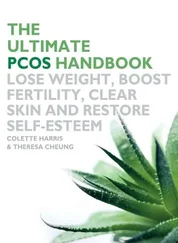Thanks to the work of Jung and Freud and other influential dream theorists, dream interpretation is now accessible to everyone. It’s as popular today as it has ever been, with people from all walks of life using dreams as unique and personal sources of guidance and inspiration, or as tools for change, growth and personal development. As we’ve seen, there are many approaches to the study and interpretation of dreams and you’ll find a fusion of all of these in this book.
Famous dreams
Through the centuries, the dreaming mind has been credited with being the source of ideas, insights, revelations and guidance, some of which have changed the course of history. Here are just a few well-known examples:
Julius Caesar’s decision to cross the Rubicon is attributed to a dream in which he saw himself in bed with his mother (Mother Rome, the seers told him). His assassination was foretold in his wife’s Calpurnia’s dream. ‘She held him in her arms, bleeding and stabbed.’ Another Caesar, Caesar Augustus, is said to have walked the streets as a beggar because of instructions he received in a dream.
St Francis of Assisi founded the Franciscan Order because of a dream in which Jesus Christ spoke from the cross, telling him to ‘go set my house in order’.
Dante relates that the whole story of The Divine Comedy was revealed to him in a dream on Good Friday in 1300. When he died in 1321, part of the manuscript was lost. His son Jocojso found the manuscript after a dream in which his father showed him where to look.
Genghis Khan is reported to have received his battle plans from his dreams. He is also reported to have been told in a dream that he was a chosen one.
Samuel Taylor Coleridge’s famous poem, ‘Kubla Khan’, was written upon awakening from an opium-affected dream.
Robert Louis Stephenson believed that his best stories came from his dreams. He reported that the theme for Dr Jekyll and Mr Hyde was derived from a dream. He also reported other breakthroughs in his writing that came from his dreams. He suffered as a child from nightmares and learned to control his dreams to change the nightmares. He said he used his dreams to revise plays and stories while asleep.
Abraham Lincoln dreamt, days before his assassination, of great cries coming from the East Wing of the White House. When he investigated, he was told by soldiers on guard that they weeping for the president who had been assassinated. Days later, his body was held in state in the East Wing so people could pay their last respects.
Friedrich August Kekulé von Stradonitz was a chemist working on the chemical structure of benzene. He reported that he got fed up with his data, which made no sense interpreted as a ‘long string’ molecule. He was dozing in his comfy chair when he was startled by the image of a snake biting its own tail. He woke and worked out the mathematics of the benzene molecule as a ring rather than a long string.
Guiseppe Tartini (Italian violinist and composer) composed one of his greatest works, ‘The Devil’s Trill’, as a result of a dream he had in 1713. In the dream, he handed his violin to the devil himself, who began to ‘play with consummate skill a sonata of such exquisite beauty as surpassed the boldest flights of my imagination. I felt enraptured, transported, enchanted; my breath was taken away, and I awoke. Seizing my violin I tried to retain the sounds I had heard. But it was in vain. The piece I then composed…was the best I ever wrote, but how far below the one I heard in my dream!’
Elias Howe, the inventor of the sewing machine, wrote that he got the core idea, the breakthrough concept, from a dream. It was a nightmare. He had been captured by cannibals. They were preparing to cook him and they were dancing around the fire waving their spears. Howe noticed at the head of each spear there was a small hole through the shaft, and the up and down motion of the spears and the hole remained with him when he woke. The idea of passing the thread through the needle close to the point, not at the other end, was a major innovation in making mechanical sewing possible.
Niels Bohr reported that he developed the model of the atom based on a dream of sitting on the sun with all the planets hissing around on tiny cords.
Paul McCartney heard a haunting melody in one of his dreams, confirmed that none of the Beatles had heard it before, and wrote it down. It became the tune for the famous song, ‘Yesterday’.
‘I can never decide whether my dreams are a result of my thoughts, or my thoughts the result of my dreams. It is very queer. But my dreams make conclusions for me. They decide things finally. I dream a decision.’ D. H. Lawrence
Just as there are different types of music—classical, rock, jazz—there are different kinds of dreams. Although different types of dream can blend and merge, modern dream researchers tend to break dream types into the following categories:
These can exaggerate certain situations or life attitudes in order to point them out sharply for the dreamer. For example, someone who is very shy may dream that they have become invisible.
These are dreams that may alert us to possible outcomes in situations in our waking life; for example, passing or failing an exam.
Such dreams evoke extremely emotional reactions, when the unconscious is urging us to relieve pent-up feelings we may feel unable to express in waking life. For example, you may find yourself bursting into tears on a packed commuter train in your dreams, or you might punch your irritating neighbor or tell your boss exactly what you think of him or her.
Daydreaming
There is a big difference between daydreaming and dreams when you are sleeping, even though the physical state we enter when we daydream has much in common with the relaxed state we assume during sleep. However, when you are daydreaming, you are not actually asleep. When you are asleep, your defense mechanisms are down and you are psychologically more vulnerable. In other words, we shed the masks we wear in public. Therefore what is expressed in night dreaming is probably a better representation of whom we are, not just our waking hopes and fears. Feelings and thoughts we might be unwilling to acknowledge in waking life often surface boldly in dreams. Night dreams also speak to us in the powerful language of symbols, whereas the language of daydreams tends to be more tangible, reflecting events that have a clearer reality to them.
CONTRARY OR COMPENSATORY DREAMS
In these types of dreams, the unconscious places the dreaming self in a totally different situation to the one we find ourselves in waking life. For example, if your day has been filled with unhappiness and stress due to the death of a loved one or the end of a relationship, you may dream of yourself spending a carefree, happy day by the seaside. Your unconscious may also give you personality traits that you haven’t expressed in waking life. For example, if you hate being the center of attention you may dream about being a celebrity. Such dreams are thought to provide necessary balance and may also be suggesting to you that you try incorporating some of the characteristics that your dream underlined in your waking life.
Also known as factual dreams, daily processing dreams are dreams in which you go over and over things that happened during the day, especially those that were repetitive or forced you to concentrate for long periods; dreaming about a long journey or a tough work assignment, for example. These kinds of dreams don’t tend to be laden with meaning, and most dream theorists think of them as bits and pieces of information your brain is processing.
Читать дальше


![Theresa Cheung - The Dream Dictionary from A to Z [Revised edition]](/books/618735/theresa-cheung-the-dream-dictionary-from-a-to-z-r-thumb.webp)
![Theresa Cheung - The Dream Dictionary from A to Z [Revised edition] - The Ultimate A–Z to Interpret the Secrets of Your Dreams](/books/692092/theresa-cheung-the-dream-dictionary-from-a-to-z-r-thumb.webp)








